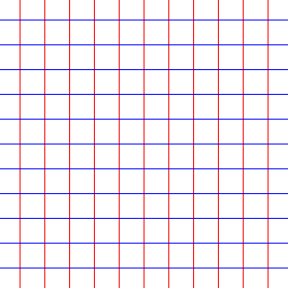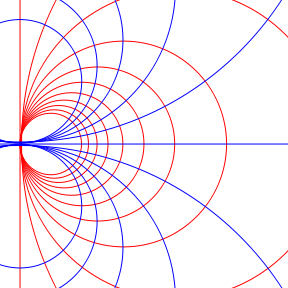The inventor’s paradox is a phenomenon that occurs in seeking a solution to a given problem. Instead of solving a specific type of problem, which would seem intuitively easier, it can be easier to solve a more general problem, which covers the specifics of the sought-after solution. The inventor’s paradox has been used to describe phenomena in mathematics, programming, and logic, as well as other areas that involve critical thinking.
In the book How to Solve It, George Pólya introduces what he defines as the inventor’s paradox:
The more ambitious plan may have more chances of success […] provided it is not based on a mere pretension but on some vision of the things beyond those immediately present.
Or, in other words, to solve what one desires to solve, one may have to solve more than that in order to get a properly working flow of information.[2]
When solving a problem, the natural inclination typically is to remove as much excessive variability and produce limitations on the subject at hand as possible. Doing this can create unforeseen and intrinsically awkward parameters.[3] The goal is to find elegant and relatively simple solutions to broader problems, allowing for the ability to focus on the specific portion that was originally of concern.[4]
There lies the inventor’s paradox, that it is often significantly easier to find a general solution than a more specific one, since the general solution may naturally have a simpler algorithm and cleaner design, and typically can take less time to solve in comparison with a particular problem.[3]
─── 維基百科《Inventor’s paradox》
大數學家波利亞宣稱
有時廣義問題比有條件限定者更易解且直覺。
就讓我們舉個保角幾何
Conformal geometry
In mathematics, conformal geometry is the study of the set of angle-preserving (conformal) transformations on a space.
In a real two dimensional space, conformal geometry is precisely the geometry of Riemann surfaces. In space higher than two dimensions, conformal geometry may refer either to the study of conformal transformations of what’s called “flat spaces” (such as Euclidean spaces or spheres), or to the study of conformal manifolds which are Riemannian or pseudo-Riemannian manifolds with a class of metrics that are defined up to scale. Study of the flat structures is sometimes termed Möbius geometry, and is a type of Klein geometry.
Möbius geometry
Möbius geometry is the study of “Euclidean space with a point added at infinity”, or a “Minkowski (or pseudo-Euclidean) space with a null cone added at infinity”. That is, the setting is a compactification of a familiar space; the geometry is concerned with the implications of preserving angles.
At an abstract level, the Euclidean and pseudo-Euclidean spaces can be handled in much the same way, except in the case of dimension two. The compactified two-dimensional Minkowski plane exhibits extensive conformal symmetry. Formally, its group of conformal transformations is infinite-dimensional. By contrast, the group of conformal transformations of the compactified Euclidean plane is only 6-dimensional.

A coordinate grid prior to a Möbius transformation

The same grid after a Möbius transformation
的例子,談談這個發明者悖論吧!
我們已知複平面上的仿射變換 ![]() 是個全純函數
是個全純函數 ![]() ,故為保角共形映射也。
,故為保角共形映射也。
且借相交於 ![]() 之任意兩線的參數式
之任意兩線的參數式
![]()
![]()
,證此變換具保角性。
假設線 ![]() 與
與 ![]() 的交角為
的交角為 ![]() 。
。
變換後
![]() ,
,
![]() ,
,
![]() ,可得
,可得
![]()
![]()
![]()
![]()
![]()
亦為直線也。同理可得
![]() 矣。
矣。
因此線 ![]() 和
和 ![]() 的交角
的交角
![]()
![]()
![]()
![]() 。
。
縱已證得相交直線族保角也,然相交者未必直線耶?也該保角乎? ?那麼將如何證明哩!
反思
![]() 、
、 ![]()
豈不是直線或曲線之切線方向嗎?況且
![]() 根本與
根本與 ![]() 無關也!
無關也!
如是
![]()
當是保角關鍵呦!!